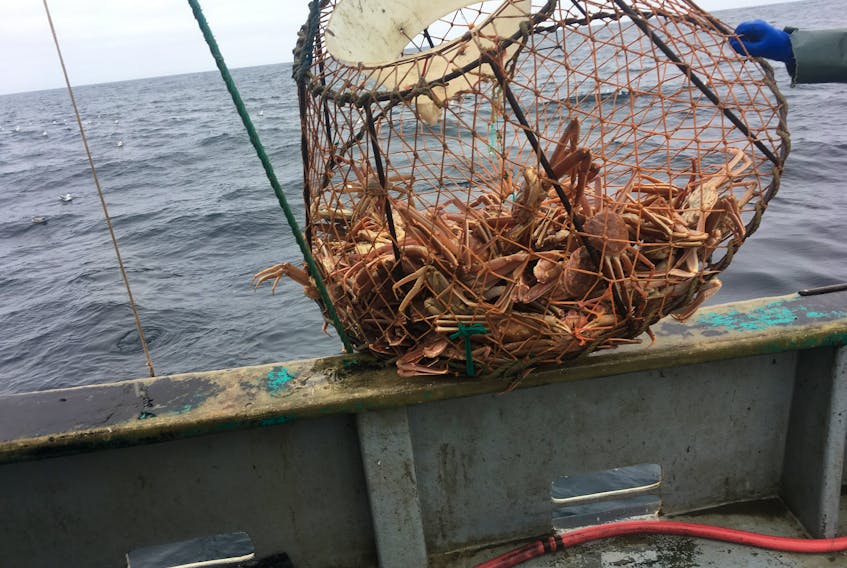EDITOR'S NOTE: This is the third story in a five-part series. In Part 3, we examine the future of the fisheries in Atlantic Canada in 2020 and beyond.
Microplastics inside Bay of Fundy clams. Dead herring on a southwestern Nova Scotia beach. A whale entangled in fishing gear off Newfoundland’s coast.
It was a turbulent decade for Atlantic Canada’s fisheries, as the combined forces of climate change and mounting ocean trash took on increasing urgency.
Climate impacts on fisheries

Experts say the next decade presents a critical challenge for the fishing industry as it prepares for warming waters, increasing sustainability and cutting down on waste.
"Climate change is real and it’s having an effect on our industry,” said Leo Muise, executive director of the Nova Scotia Seafood Alliance.
“Everything you fish in Nova Scotia is a coldwater species, so if the water gets warmer we’re concerned about it impacting our catch.”
A recent study found that “climate shocks” are reducing fish populations in the North Atlantic region, leading to fewer jobs and lower wages in New England’s fishing sector.
The research didn’t directly examine data from Atlantic Canada, but suggests that this region’s fish stocks could see some changes in the coming years.

Meanwhile, the prime minister’s recent mandate letter to Fisheries and Oceans Minister Bernadette Jordan highlighted the need to implement the Ocean Plastics Charter.
The non-binding accord, signed by five of the G7 leaders and the European Union, aims to reduce marine litter. This includes waste generated by fishing, like so-called ghost gear — abandoned, lost and discarded fishing gear.
“Fishermen may see increasing regulations over their gear and disposal of that gear so that it does not end up in the ocean,” Megan Bailey, assistant professor in the Marine Affairs Program at Dalhousie University, said in an email.
She said new regulations could spur innovations in fishing gear, such as ropeless lobster traps.
Following the fish

“Innovations have often been about increasing fishing efficiency,” said Bailey, also the Canada Research Chair in Integrated Ocean and Coastal Governance. “But I think we know that innovations can benefit conservation and environmental protection.”
The mandate letter also underscored the need to develop a boat-to-plate traceability program, something Bailey called “a huge can of worms.”
The proposed program would be difficult to implement, she said, noting that it could have widespread ramifications for fishermen.
Still, Bailey said it could increase demand for Nova Scotia seafood within Canada.
“I’m wary of the increasing export-driven goals of the government, when I think Canadians have a right to enjoy and benefit from Canadian-caught fish and seafood.”
The region has increased seafood exports dramatically over the last decade, with Nova Scotia leading the charge.
Export increase
Exports from the province to China, for example, quadrupled between 2013 and 2018, with seafood alone accounting for about two-thirds of trade.
For 2019, exports to the Asian country were expected to hit $1 billion, buoyed in part by a U.S.-China trade dispute pummeling the lobster industry south of the border. Lobster from Nova Scotia has a seven per cent tariff in China, compared to a 35 per cent tariff on U.S. lobster.
“The geopolitical situation is certainly impacting us positively for now,” Muise with the Seafood Alliance said.
“So far, the trade war between the U.S. and China has given us an advantage.”

Muise admits that could change in the coming months. But he said even if the tariff was removed, Nova Scotia would likely maintain solid exports to China.
“It’s about relationships,” he said. “They know our quality, and the arrangements with the airlines and customs are all in place, so I don’t think we’d see a significant drop.”
There could be some uncertainty with Brexit, Muise noted, but said the Canada-European Union Comprehensive Economic and Trade Agreement (CETA) looks promising for the fishing industry.
“Nova Scotia seafood is increasingly in demand worldwide,” he said. “The United States has always been our primary export customer, but we’re exporting more to Europe and Asia and the Middle East.”
Prices strong, labour pool weaker

Muise said prices will hopefully remain stable, with lobster at the wharf selling for about $9 a pound in recent weeks.
Compared to 2013 “when you couldn’t give it away for $3.50,” he said prices are strong.
Meanwhile, Muise said availability of labour could be a pressing issue for the fishing industry in the 2020s, especially in seafood processing.
“Labour issues are mostly in the plants,” he said. “But if you study the demographics it will find its way to the boats eventually.”
Muise said the industry is working on improving conditions and making the jobs more attractive.
“There’s a movement towards technology to make some of the work a little easier,” he said. “If you went on board a modern fishing boat, you’d be amazed at the improvements.”
More on the decade ahead:








